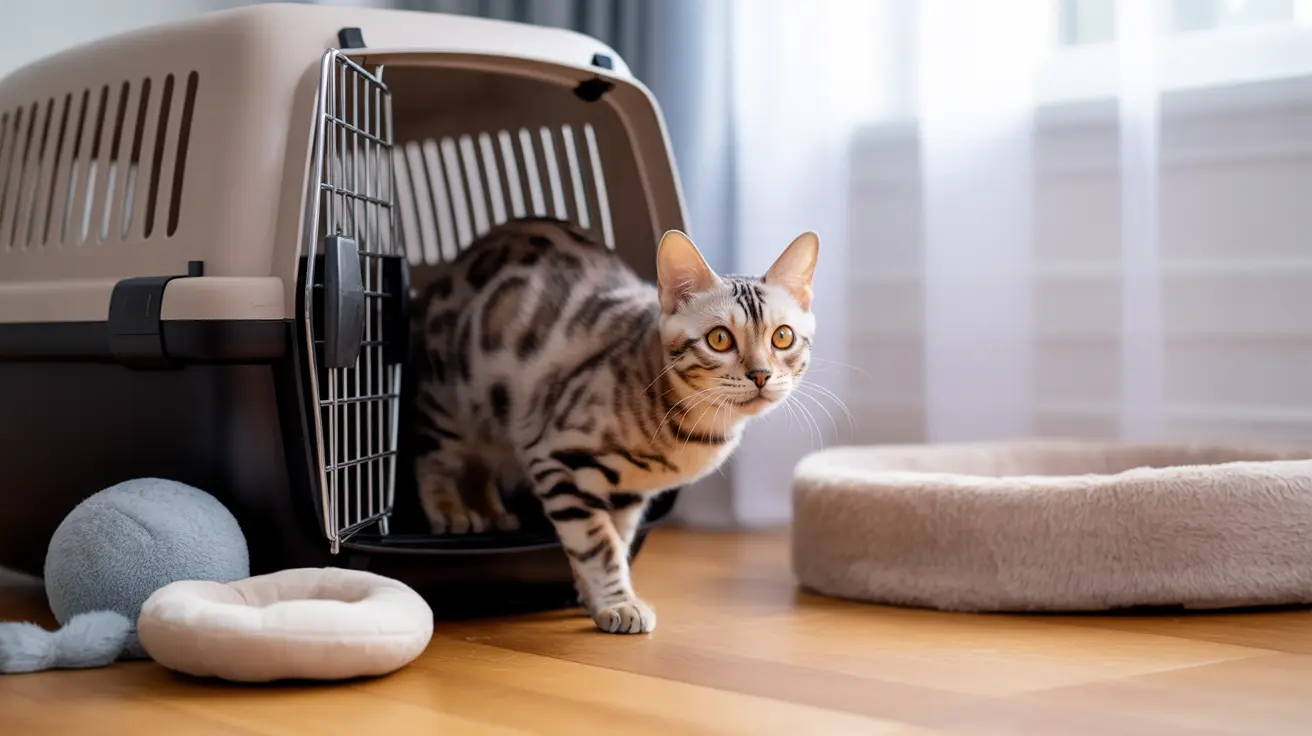Essential Pre-Move Preparations
Before the big move, taking proper precautions can significantly impact your cat's transition success. Start by scheduling a veterinary check-up to ensure your cat is healthy and update any necessary vaccinations. This is also the perfect time to discuss microchipping if your cat isn't already chipped.
Create a dedicated moving kit for your cat that includes:
- Familiar bedding and toys
- Regular food and treats
- Portable litter box and fresh litter
- Comfort items with familiar scents
- Medical records and identification
Setting Up for Moving Day
As moving day approaches, begin acclimating your cat to their carrier by leaving it out with comfortable bedding and treats inside. This creates positive associations and reduces stress when transport becomes necessary.
Managing the Move
On moving day, keep your cat confined to a quiet room with essential supplies until the last possible moment. This prevents escape attempts and minimizes stress from the chaos of moving activity.
When transporting your cat:
- Use a secure, well-ventilated carrier
- Place familiar bedding inside
- Keep the carrier covered to reduce visual stimulation
- Maintain comfortable temperature
- Minimize travel time when possible
Establishing the New Territory
Upon arrival at your new home, set up a dedicated "safe room" for your cat before letting them out of their carrier. This room should include:
- Litter box
- Food and water stations
- Comfortable hiding spots
- Familiar toys and bedding
- A pheromone diffuser to reduce stress
Indoor Adjustment Period
Keep your cat indoors for at least 2-4 weeks after the move. This crucial period allows them to:
- Develop a strong association with their new home
- Learn the layout and safe spaces
- Establish new routines
- Build confidence in their environment
Transitioning Back to Outdoor Access
When reintroducing outdoor privileges, follow these steps:
- Start with supervised outdoor sessions
- Choose quiet times of day for initial exploration
- Accompany your cat during their first outings
- Gradually increase outdoor time
- Always ensure outdoor access occurs before meals to encourage return
Safety Measures for Outdoor Cats
Implement these safety protocols to protect your relocated cat:
- Update microchip information immediately
- Provide a collar with new contact details
- Install a cat flap if appropriate
- Create outdoor shelter options
- Establish feeding routines that encourage return
Frequently Asked Questions
How can I prepare my outdoor cat for a smooth move to a new home?
Prepare your cat by updating their identification, scheduling a vet check-up, and gradually introducing them to their carrier. Create a dedicated moving kit with familiar items and establish a quiet space in your new home before the move.
What steps should I take to keep my outdoor cat safe during the moving day?
Keep your cat in a secure room with essential supplies until the last moment, transport them in a covered carrier with familiar bedding, and ensure they're properly identified in case of escape.
How long should I keep my outdoor cat indoors after moving to help them adjust?
Keep your cat indoors for at least 2-4 weeks after moving. This allows them to become familiar with their new environment and establish it as their home territory.
When is it safe to let an outdoor cat explore outside again after relocating?
Begin supervised outdoor exploration after 2-4 weeks of indoor adjustment, starting with short sessions before mealtimes and gradually increasing duration as your cat shows confidence.
How do I help a feral or highly outdoor-dependent cat adapt to a new environment?
Provide a secure outdoor enclosure or catio during the transition period, maintain consistent feeding schedules, and create multiple safe hiding spots and shelters in your new yard.
Remember, every cat is unique and may require different amounts of time to adjust to their new home. Stay patient, maintain consistent routines, and always prioritize your cat's safety during the transition period.






